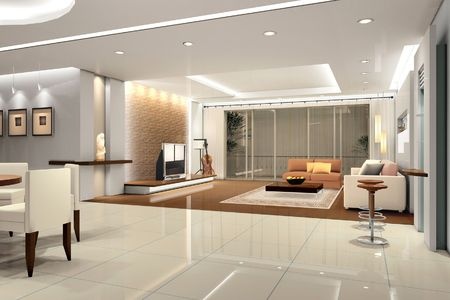 LED lighting is far from inexpensive, yet more homeowners are choosing it to light their properties. While the upfront cost is usually high, you can mitigate this with the long-term benefits. As well as offering a significant reduction in energy usage, LED is safer, less toxic, and does not require as many replacements as other forms. However, you do need to consider where you use it carefully because of the brightness. Understanding more about LED and how it can benefit your property will make the installation process easier.
LED lighting is far from inexpensive, yet more homeowners are choosing it to light their properties. While the upfront cost is usually high, you can mitigate this with the long-term benefits. As well as offering a significant reduction in energy usage, LED is safer, less toxic, and does not require as many replacements as other forms. However, you do need to consider where you use it carefully because of the brightness. Understanding more about LED and how it can benefit your property will make the installation process easier.
What are the Benefits of Using LED Lighting in Your Home?
Depending on the type of lighting you were using before, you may save as much as 80% on your energy bill. If you were using halogen bulbs, you can see the maximum benefits. On average, most individuals who switch to LED lighting save between 30 and 40%. This is still significant, especially when you consider many LED bulbs last as long as 50,000 hours in use. This is just under six years of continuous use.
In contrast with other bulb types, LED is less toxic. If you care about the environment, this means you worry less when you dispose of them. At the same time, they are less likely to overheat. In general, this means you spend less time replacing the bulbs and more time benefiting from them.
Where Can You Use LED Lighting in Your Home?
The upfront cost of going all out and replacing every light you currently have with an LED alternative is usually quite high. However, you can benefit from using it in certain areas. Many homeowners choose to use this lighting to accentuate features in their garden or around the house. Another popular option is adding LED lighting to certain areas of your kitchen. You can use them underneath high cupboards to light your kitchen sides and under extractor fans to highlight your hob. This makes cooking at night easier, and helps you save energy in one of the rooms you use the most.
As you can use LED lighting in different colours and dim them easily, you may want to consider adding them to your bathroom or bedroom. Creating an ambience in these areas is a great way to relax, especially if you have trouble sleeping or if you suffer with depression. Other forms of lighting are often harsh and glare, which means they can make trying to relax a little challenging.
Depending on how high the lux of your bulbs is, they can have a positive effect on seasonal mood disorders. When the winter blocks out regular sunlight, some volumes of LED are strong enough to mimic it and balance your moods. You would need to discuss relevant products with an electrician before moving ahead, if lifting moods is one of your aims.
If you choose to work from home, especially as a craftsperson or artist, you can use this type of lighting to highlight your workspace. By delivering higher volumes of light, it can ensure you don’t miss finer details while in a workshop.
Once you have installed LED lighting, you can look forward to lots of power with minimal maintenance. Although the upfront costs of an installation are higher than when you use other bulbs, always keep the long-term financial benefits in mind. Seeking out the advice of a skilled electrician is a great way to determine where this type of lighting can work in your home.